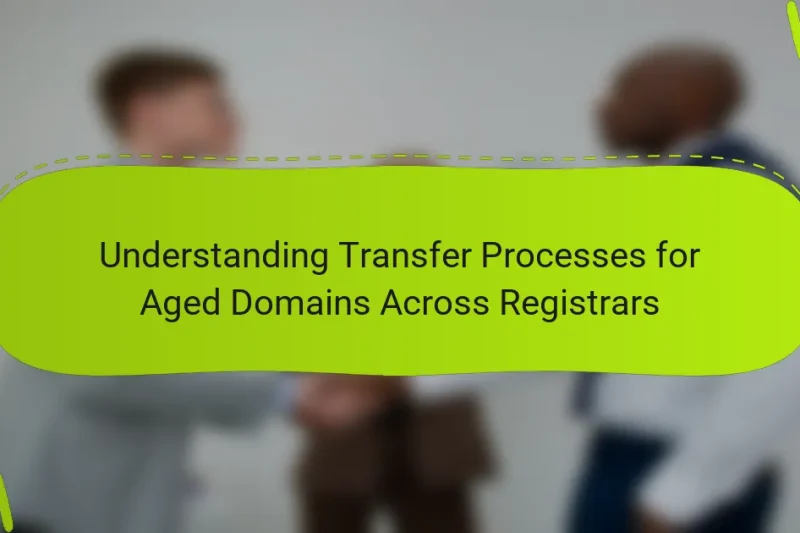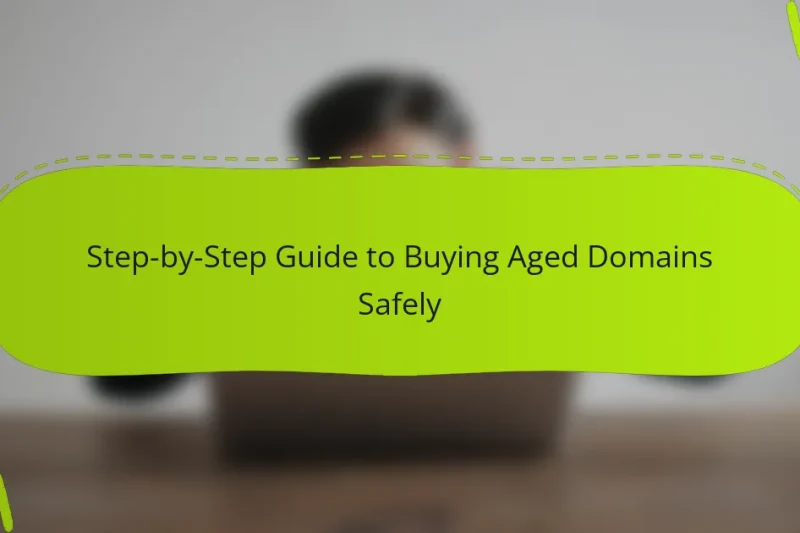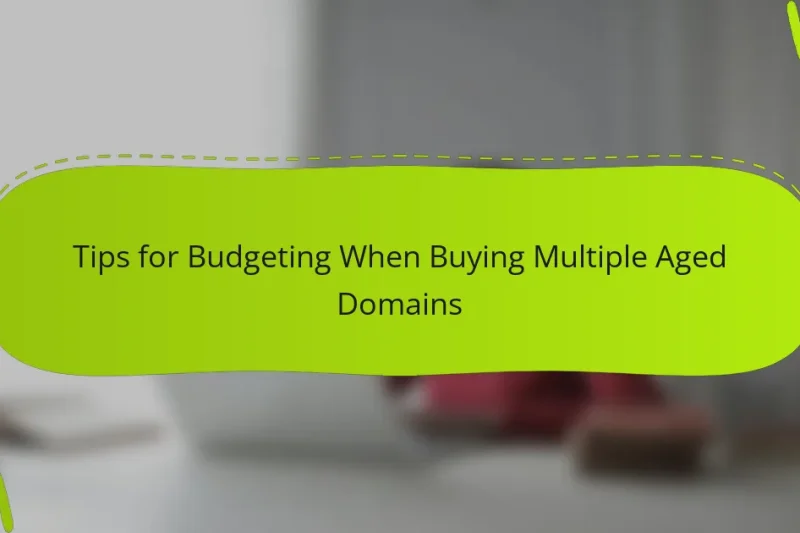Transferring aged domains between registrars in Palau is a straightforward process that ensures the domain’s continued … Understanding Transfer Processes for Aged Domains Across RegistrarsRead more
Steps for Purchasing Aged Domains
Purchasing aged domains can be a strategic move for enhancing your online presence. By following essential steps such as researching domain history, evaluating authority, and assessing relevance, you can identify valuable assets that align with your goals. It’s crucial to choose reputable sellers and consider key factors like domain authority and traffic history to maximize your investment.
Step-by-Step Guide to Buying Aged Domains Safely
Purchasing aged domains can be a strategic move for enhancing your online presence, but it requires … Step-by-Step Guide to Buying Aged Domains SafelyRead more
Comparing Auction vs. Direct Purchase for Aged Domains
When it comes to acquiring aged domains in Palau, buyers can choose between auctioning and direct … Comparing Auction vs. Direct Purchase for Aged DomainsRead more
Tips for Budgeting When Buying Multiple Aged Domains
Budgeting for multiple aged domains requires careful planning and a clear understanding of your financial limits. … Tips for Budgeting When Buying Multiple Aged DomainsRead more
Best Platforms for Purchasing Aged Domains in 2025
In 2025, finding the right platform for purchasing aged domains is crucial for maximizing your investment. … Best Platforms for Purchasing Aged Domains in 2025Read more
How to Avoid Scams When Buying Aged Domains Online
When purchasing aged domains online, it’s essential to navigate the process carefully to avoid scams. Focus … How to Avoid Scams When Buying Aged Domains OnlineRead more
How to Negotiate Prices for Aged Domains in the Marketplace
Negotiating prices for aged domains requires a keen understanding of market dynamics and the motivations of … How to Negotiate Prices for Aged Domains in the MarketplaceRead more
What are the steps for purchasing aged domains?
Purchasing aged domains involves several key steps to ensure you select a valuable asset. These steps include researching domain history, evaluating authority, checking backlinks, assessing relevance, and verifying age.
Research domain history
Understanding the history of a domain is crucial before making a purchase. Look for any previous ownership, past uses, and any penalties that may have been imposed by search engines. Tools like Wayback Machine can help you view archived versions of the site.
Additionally, check for any history of spam or malicious activity associated with the domain. A clean history can significantly enhance the domain’s value and usability.
Evaluate domain authority
Domain authority (DA) is a metric that predicts how well a domain will rank on search engines. Use tools like Moz or Ahrefs to assess the DA score, which typically ranges from 1 to 100. A higher score indicates a stronger potential for ranking.
Consider the DA in relation to your niche; a domain with a DA of 30 may be valuable in a less competitive market, while a score of 50 might be necessary in a highly competitive field.
Check for existing backlinks
Existing backlinks are a significant factor in a domain’s SEO value. Use tools like SEMrush or Majestic to analyze the backlink profile, focusing on the quality and relevance of the links. High-quality backlinks from reputable sites can enhance the domain’s authority.
Avoid domains with toxic backlinks, as they can harm your site’s reputation and ranking. Aim for a diverse backlink profile that includes links from various relevant sources.
Assess niche relevance
Niche relevance is essential for maximizing the potential of an aged domain. Ensure that the domain aligns with your business or content focus. A domain that resonates with your target audience will perform better in search rankings.
Consider the keywords associated with the domain and how they fit into your overall strategy. A domain with relevant keywords can provide an SEO advantage and attract the right visitors.
Verify domain age
The age of a domain can influence its credibility and SEO performance. Use WHOIS lookup tools to confirm the registration date and ensure the domain has been active for several years. Generally, domains older than five years are considered aged.
Older domains often have established authority and trust with search engines, making them more valuable. However, always combine age verification with other factors like history and backlinks for a comprehensive assessment.
How to find reputable aged domain sellers?
To find reputable aged domain sellers, focus on established platforms and trusted sources. Look for sellers with positive reviews, a solid track record, and transparent practices to ensure a safe purchasing experience.
Use established marketplaces
Established marketplaces like GoDaddy Auctions, Sedo, and Flippa are reliable venues for purchasing aged domains. These platforms offer a variety of domains and often provide user ratings and reviews, which can help you gauge seller credibility.
When using these marketplaces, filter your search by age, price, and domain authority. This can help you quickly identify domains that meet your specific needs and budget.
Check domain auction sites
Domain auction sites are another excellent option for finding aged domains. Websites such as NameJet and SnapNames specialize in auctioning expired or premium domains, often at competitive prices.
Be prepared to bid against others, and set a maximum price you are willing to pay. Monitor auctions closely, as prices can fluctuate significantly based on demand.
Consult domain brokers
Consulting domain brokers can provide access to exclusive aged domains that may not be listed publicly. Brokers have industry expertise and can help negotiate prices, ensuring you get a fair deal.
When choosing a broker, look for those with a good reputation and experience in the domain market. Discuss your specific requirements and budget to find the best options available.
What criteria should you consider when selecting an aged domain?
When selecting an aged domain, consider factors such as domain authority, keyword relevance, and traffic history. These criteria will help you determine the domain’s potential value and effectiveness for your intended use.
Domain authority metrics
Domain authority (DA) is a score that predicts how well a domain will rank on search engines. A higher DA typically indicates a stronger backlink profile and greater trustworthiness. Aim for domains with a DA of 30 or above for better chances of ranking well.
Check metrics from tools like Moz, Ahrefs, or SEMrush to assess a domain’s authority. Look for a consistent growth trend in DA over time, as this can indicate a healthy domain.
Keyword relevance
Keyword relevance refers to how well the domain’s existing content aligns with your target keywords. A domain with keywords that match your niche can enhance your SEO efforts. Use tools like Google Keyword Planner to analyze keyword performance and relevance.
Evaluate the historical content of the domain to ensure it aligns with your current goals. Avoid domains with a history of unrelated or spammy content, as this can harm your SEO efforts.
Traffic history
Traffic history provides insights into the domain’s past performance and popularity. Use tools like Google Analytics or SEMrush to review historical traffic data. Look for domains with consistent or growing traffic patterns, as this indicates ongoing interest and potential value.
Be cautious of domains with sudden spikes or drops in traffic, as these may signal issues such as penalties or changes in search algorithms. Aim for domains that have maintained stable traffic over the years for a safer investment.
What are the risks of purchasing aged domains?
Purchasing aged domains comes with several risks that can impact your online presence and business reputation. These risks include potential penalties from search engines, the presence of spammy backlinks, and possible ownership disputes.
Potential penalties from search engines
Search engines like Google may impose penalties on aged domains if they have a history of violating guidelines. This can lead to lower rankings or even removal from search results. It’s crucial to research the domain’s past to avoid these penalties.
To mitigate this risk, check the domain’s history using tools like Wayback Machine or Google Search Console. Look for any previous penalties or negative associations that could affect your site’s performance.
Risk of spammy backlinks
Aged domains may have accumulated backlinks that are considered spammy or low-quality. These backlinks can harm your site’s credibility and search engine ranking. It’s essential to analyze the backlink profile before purchasing an aged domain.
Utilize tools such as Ahrefs or Moz to evaluate the quality of backlinks. Aim for a domain with a clean backlink profile, and consider disavowing any harmful links if you proceed with the purchase.
Ownership disputes
Ownership disputes can arise if the aged domain has had multiple previous owners or if there are trademark issues. This can lead to legal challenges and loss of the domain. Conduct thorough due diligence to ensure clear ownership.
Check the domain’s registration details through WHOIS lookup services to verify ownership history. If possible, obtain documentation from the seller confirming their right to sell the domain to avoid future disputes.
How to evaluate the price of an aged domain?
Evaluating the price of an aged domain involves considering factors such as its history, traffic, backlinks, and market demand. A well-researched assessment can help you determine a fair price and avoid overpaying.
Market comparison
To effectively evaluate the price of an aged domain, compare it against similar domains in the market. Look for domains with comparable age, traffic levels, and backlink profiles. This will give you a baseline for understanding what constitutes a reasonable price.
Use online tools and marketplaces to gather data on recent sales of similar domains. Websites like Sedo, Flippa, and GoDaddy Auctions can provide insights into current market trends and pricing. Generally, aged domains can range from a few hundred to several thousand dollars depending on their perceived value.
When comparing prices, consider the domain’s niche and relevance. Domains in high-demand industries, such as finance or technology, may command higher prices than those in less competitive fields. Always factor in the potential return on investment when assessing the value of an aged domain.






